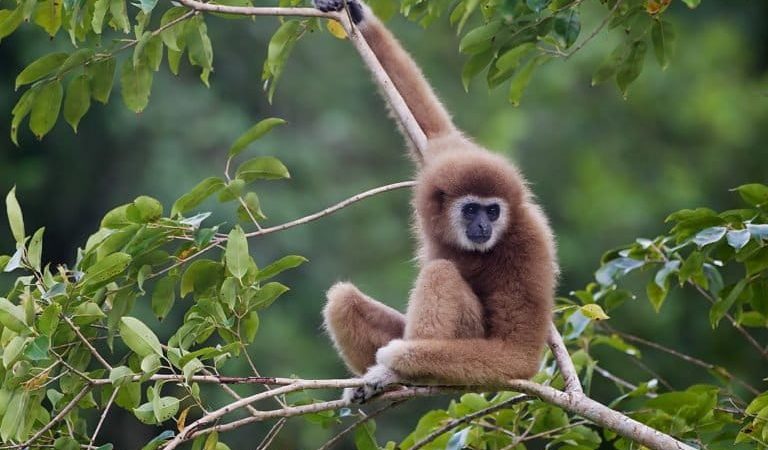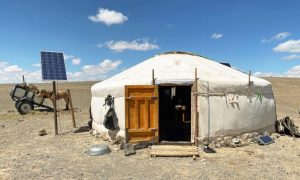Gibbons, commonly called lesser apes, aren’t as well-known as some of their great ape cousins like chimpanzees or gorillas. But the lives of these highly arboreal primates are no less fascinating. They reside in the canopy of the tropical forests of South and Southeast Asia, living in small family groups, each patrolling its own territory, and communicating through highly musical, haunting songs. Their diet, consisting predominantly of fruits, makes them key seed dispersers. Yet gibbons are among the most threatened primate groups in the world: of the 20 known species, five are listed as critically endangered on the IUCN Red List, and 14 are endangered. All gibbon species are targeted by the international wildlife trade. Today, on International Gibbon Day, we present some recent Mongabay stories about these agile, long-limbed apes. Signs of hope The endangered Javan gibbons (Hylobates moloch), found only on the Indonesian island of Java, are mostly confined to small forest patches today. Two such groups have become isolated from a larger forest area by farms and settlements in Central Java province. A local NGO, SwaraOwa, is working with farmers in the region to cultivate native trees and plant them to build forest corridors, Mongabay reported in a video published in June. The gibbon population there has increased from about 800 individuals 10 years ago to 1,000 in 2023. “Our motivation as young people is that future generations will not just hear stories about the gibbons, they’ll be able to see them from their backyards if they…This article was originally published on Mongabay
International Gibbon Day: Spotlighting the overlooked, underprotected ‘lesser apes’





